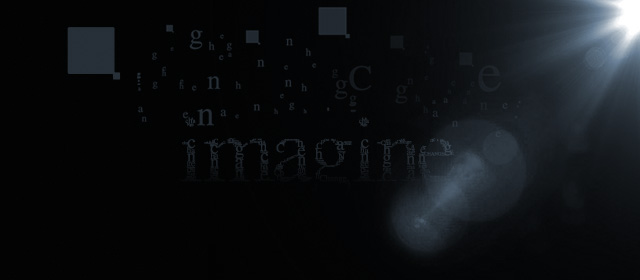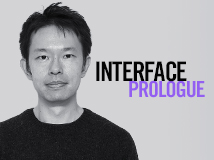INTERFACE
STORY 1/3
The Cradle: TAKASHI KURATA
February 9, 2016
Interfaces in 2036, imagined by sci-fi author Takashi Kurata, is introduced in seven segments, four from a short story and three from an interview with him. This is the first in a three-part series of the short story. Three individuals who are locked in a cylindrical paper office realize that Papel Nova is an intermediary interface for the generation gap. What could be the reason for that?
Save the People
Sasanami gave birth to her first born in the office. Her water broke while taking a call from a client. Three hours later she came out on a stretcher brought in by the volunteer corps. She was holding her newborn to her chest and talking with the same client on the phone. It happened on the day before the last day for the delivery of goods.
Tomi was at his desk in the same office and heard the cries of the newborn as he stared at the business management software on his screen. The newborn’s cries came through the paper partitions and resounded off of the floor and transported Tomi far away from the work in front of his eyes and the life he had led to that point.
“Sasanami, what a great initiation. You did a good thing, didn’t you!” Yoshida said this, and Sasanami let out a sigh.
“I was actually thinking that I was stupid. If my husband hadn’t applied for emergency assistance from the volunteer corps, it could have been really dangerous!”
On that day four years before, giving birth in the office started with the arrival of a small origami paper airplane. The paper plane that flew into the room announced things such as the arrival of the volunteer corps, the verification of the legality of the medical treatment performed by the member doctors in that location, and the receipt of authorization from the patient.
Tomi’s eyes were fixed on the paper plane, because it was made from Papel Nova. And finally, after hearing the name of the person that the paper plane announced, Tomi and his colleagues realized that Sasanami was hunched over in her seat with her forehead pressed against her desk.
The people in the corps had mastered using Papel Nova in their own unique ways. The members wearing paper clothes were able to crowd around Sasanami. A simple medical treatment booth was formed using paper partitions. Disposal clothes, facemasks, and the cardiac monitor that wrapped around Sasanami’s wrist were all applications created from the highly functional material.
Shortly after that, Sasanami left and a year later became a member of the volunteer corps. On the other hand, Tomi made a career change and joined a Papel Nova development firm. After three years had passed, it was in 2036 when Tomi noticed Sasanami’s face in a spate of news stories. The volunteer corps had launched a political party and used the people who had supported them to create their base, and sent a number of members to the House of Representatives.
Presently, Sasanami explained, “When the volunteer corps began to form, there was a plan to send people to participate in national politics.”
“We knew that it was necessary to make fundamental changes instead of providing them only surface support.”
Organizations of such considerable scale and mobile power were said to run based on donations. It also appeared that the staff was properly compensated. We located and approached workers at work places where people were overworked by making full use of large-scale and sophisticated social data analysis. The organization comprehensively provided services based on the needs of each individual and offered mental and spiritual support. And that was precisely why the base was strong.
The Transitory Interface
In the hands of the three individuals the paper little by little transformed into a complex object. At the diagonal line the paper folded into a peak, then where it had divided equally into sixteenths, at the third section it folded over into a valley, forming a reverse fold on the outside.
“There is a mode in the paper that allows for geometric data to be taken as is and create that form,” Tomi said.
Yoshida’s smile was filled with curiosity. “I find it interesting that the location and the order in which the folds take place are indicated in the programming statement. It would, therefore, mean that the longer the content, the larger the paper would have to be. Right? Or, I wonder if there is a compression method?”
Tomi answered seriously, “I don’t assume that the statement would be that long.”
After the incident that happened with Sasanami, Tomi came to consider new ways of working. With Papel Nova’s business well on its way to increasing market share nationwide, Tomi managed to make a career change, and now was planning how the whole concept of offices could be transformed from the perspective of creating objects.
“What I find mysterious is that in this technology,” Sasanami said, stopped folding the paper, and looked around at the surrounding walls, then continued, “paper is not an information container, but ultimately is being used as an interface. Tomi, what do you think about that?”
Looking up and gazing around, Tomi replied, “I never really liked paper books.” Tomi’s earliest memory of not feeling comfortable with that object called a paper book was around the age of ten. “I just thought that this was dead!” His voice festered with indignation and Yoshida broke out in laughter. “Hundreds of pages on top of each other and not a single page is responsive. Just seems extremely wasteful, doesn’t it? You can’t search, and making copies is a pain.”
Yoshida asked, “Oh, so that’s how people born in the 21st century feel?”
Tomi experienced papermaking at school around that same time. Scooping out the gooey pulp and then, once dry, it would become tight and hard. Dissolve it once again and it became thick and gunky. That transitory and recurrent imagery had remained in Tomi’s soul. “That is why the concept of Papel Nova really resonated with me.”
There was a time when the objective was to achieve a paperless office. People expected the tablet PC and other similar electronic devices to achieve that goal. However, those devices were not the tools that would fall heir to filling the role of paper. Rather, they showed the potential that paper could not achieve and indeed, the utilization as windows that opened up to accessing information was the real advantage.
On the other hand, the good points of paper were still needed. There was still demand for a modern tool that embodied paper uses such as spreading it out on the desk and allowing for examination, cutting and pasting it together, and for dashing off memos at will. These, therefore, led to the birth of Papel Nova.
Papel Nova grew as something that complimented electronic devices and, therefore, put down deep roots in industry. hether or not the Papel Nova was folded or divided, the displayed data remained. An ink pen, stylus, or a finger could all be used to write on it, and whatever was written was instantly converted into data. It could also be used as a tablet PC terminal. As soon as the task was completed, it could be immediately collected, recycled, and there were no bundles of paper piling up. It was not permanent, but rather a type of paper media that was transitory.
Tomi, who came to be involved in development of the new paper, understood that the advantage of having the form of traditional paper had a different significance. It was a hit product because it served an environment where the older generation was familiar with the touch of paper and the younger generations were adept at manipulating electronic devices. This is what user surveys stated. Operations progress smoothly when things can be put on paper. And even the year 2036 was in that type of an era.
“In fact the new paper in the form of traditional paper serves as a mediating interface between the generations,” Tomi said.
Sasanami asked, “And now Tomi you were just now thinking beyond that weren’t you?”
The paper office was made to demonstrate how Papel Nova was the culmination of changes in offices and that it also predicted future development.
From office infrastructure to urban infrastructure. That was a concept that Tomi devised.
The A5-size paper had become an intricate origami about the size of a business card and what it was turning into could not be determined. It had to be put in the hands of a human. And, the three individuals had to take action simultaneously. “I don’t want it to be used for evil purposes,” Tomi explained.
The three individuals picked up the same shaped origami in their right hand and simultaneously held it over their heads. “One, two, three....” They counted to five and put their hands down. This they repeated three times. The sensor recognized the movement of the individuals and deciphered the shape of the origami.
After taking a breath (and within the time it took to take a breath), all of the walls were glowing in fresh green. They had rebooted the paper office.
Five minutes after that, Tomi felt at a loss. After all, the door would not open.
Yoshida said, “Is it possible that we might die of hunger here?”



















